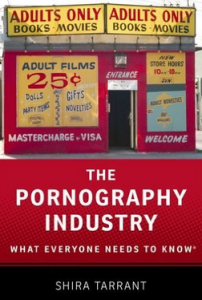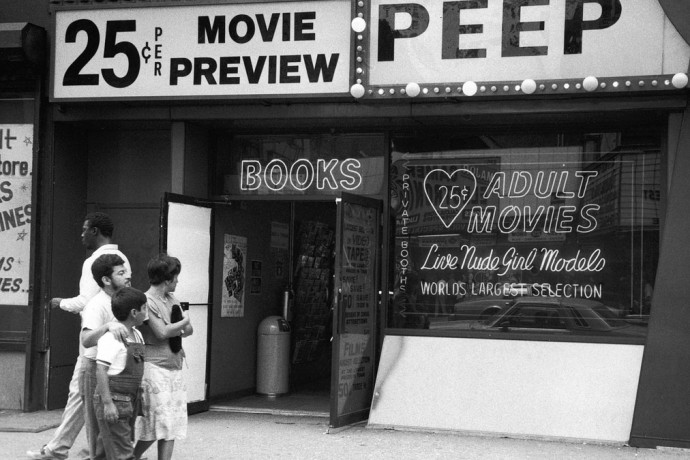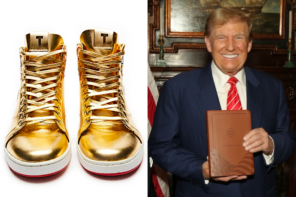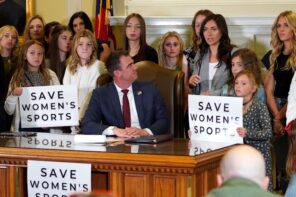Last month, Utah officially declared that pornography is a public health hazard, approving a resolution that contradicts much of the current scientific research. Regardless of one’s political or moral concerns about pornography, public policy ought to rely on the most reputable evidence possible. What’s more, Utah’s declaration fails to address the high rates of porn use among the conservative and religious, despite the state being something of a poster child for the phenomenon. What follows is an excerpt from my book, The Pornography Industry: What Everyone Needs to Know, which presents reliable information about a variety of controversial issues such as this one.
###
A recent Time magazine headline humorlessly stated in 2013 that “12 Percent of Americans Admit to Watching Porn Online, the Other 88 Percent Must Not Have Internet.” As the Time subtitle further explains, “bashful survey respondents probably diminished the total reported number of online porn watchers in the U.S.” Shame and stigma could certainly be a factor in people underreporting their own pornography use. The Public Religion Research Institute found that 71 percent of Americans think watching pornography is immoral. Yet moral objection to porn doesn’t stop people from watching. Given the high rate of online porn use documented in highly religious, conservative states, moral pressure may mean that people are watching porn yet feeling guilty for doing so.
With easy online porn access, and concerns about its impact on sexuality and interpersonal relations, the issue has taken center stage in national and global public debates. In the United States, the question about whether porn is acceptable differs by several demographic variables, such as age, education, gender, and religion. A broad overview of the data reveals some interesting patterns. People with advanced degrees are a bit more likely than college graduates to think it is morally acceptable to watch porn (40 and 34 percent, respectively). But both college grads and those with advanced degrees are significantly more likely than high school graduates to approve of watching pornography.

The Pornography Industry: What Everyone Needs to Know
Shira Tarrant
Oxford University Press
(March 2016)
When it comes to religion and race or ethnicity, white Catholics are twice as likely as Hispanic Catholics to report that watching porn is morally acceptable (28 and 14 percent, respectively). Of white evangelical Protestants, 88 percent claim they have moral objections to viewing pornography; whereas by comparison, only 40 percent of religiously unaffiliated people express moral concerns about porn.
In terms of age factors, it appears that the older you are, the less likely you approve of porn. Of Millennials, 45 percent think watching porn is morally okay while 33 percent of people aged 34–48 have no moral objection to porn, and only 9 percent of those over the age of 68 approve of watching pornography. It will be interesting to see in the future whether Millennial porn approval rates change as this cohort gets older.
In one of the few studies investigating porn use by women and men, German researchers found that Millennial women were active and interested porn consumers. These women used porn to stimulate their own sexual desire and did not express disinterest or disgust. The Public Religion Research Institute (PPRI) finds that only 29 percent of Americans overall think watching porn is morally acceptable, yet people living in highly religious and conservative states seek out more online pornography than their more liberal neighbors. For all the public debate about religion, pornography, and sexual morality, there is a disjuncture between what people say and what people do. While many conservative religious groups object to pornography, the data on porn-use patterns reveal there is robust access to adult content within US states that skew more religious.
Over a two-year period, researchers Cara C. MacInnis and Gordon Hodson found that in highly religious and conservative states, there is also a correspondingly high volume of Internet searches for sexual content. This association between religious conviction, political conservatism, and the search for online porn is a strong one. In a scatter plot indicating correlations between religiosity and Google searches for sex, conservative Mississippi ranked the highest, whereas Vermont—known to be a liberal state—clocked in with the lowest number of both Internet porn searches and religiosity.
Just knowing the number of conservatives in a given state was enough information for the researchers to accurately predict the extent of pornography searches using key words including sex, gay sex, porn, free porn, XXX, and gay porn. These findings held true even after the researchers controlled for other demographic variables such as population size, poverty rate, and Internet use among various states. Harvard Business School professor Benjamin Edelman’s research replicates these findings, with Utah and Mississippi ranking the highest rates of online porn site subscriptions.
And what exactly are people searching for? According to PornMD, US keyword searches include “teen,” “step sister,” and “anal” among the top ten. Information collected by Vocativ compiles state-by-state trends among people accessing Pornhub, a highly trafficked tube site. In Utah, the favorite search term is “lesbian” while Vermont’s favorite search term is “cartoon.” Porn viewers in religious Mississippi spent more average time-per-visit on Pornhub in 2013 than any other state in the US.
Because people who believe in conservative political and religious ideology are generally associated with opposing homosexuality, sex outside marriage, and non-procreative sex, these findings might raise some eyebrows. There are a few plausible interpretations for the positive correlation between high rates of conservatism and the volume of US Internet porn searches. This paradox may result from preoccupation with sexual content, presumably because of the taboo. It may also be the case that high rates of online sexual activity come from liberals who live in these sexually restrictive right-leaning states.
In any case, the rhetoric and reality gaps when it comes to religion and porn use easily confuses the issues and leaves people at odds in knowing what to do. Associate Pastor Cameron Beyenberg works with youth at a Southern California church. In working with young people between the ages of 14 and 18, Beyenberg notes that teens have a lot of questions abut pornography, and they really want to talk about the issues—even if some of the teens are initially shy about it. It doesn’t help that pornography has been such a taboo topic in the church, he adds. Personally, Pastor Beyenberg hopes the frank conversations will lead to abstinence from pornography. But the fact is, he notes, the average teen is already watching it. Without a chance to talk openly about pornography, it leaves maturing teens with flooding hormones and easily available pornography, a combination that can create a conflict between body image, gender-role expectations, and teens’ sense of self. Beyenberg hopes education and conversation will help in better understanding these issues.
As for those national trends in keyword searches, one caveat is important to add. In part, keyword search rates reflect the language used when porn content is tagged in the first place. Keywording practices impact the search options available to end-users. This, in turn, skews the data. That said, 20-something online porn users are more likely to seek out the term stepmom; by age 55 to 64, the term massage jumps to number one.
###
Excerpted from The Pornography Industry: What Everyone Needs to Know by Shira Tarrant (Oxford, March 2016). Reprinted with permission from Oxford University Press.





